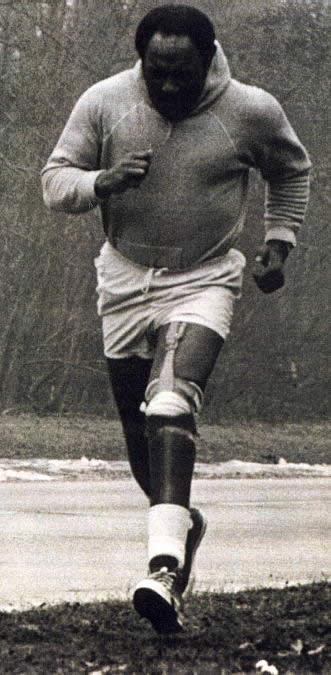Oct 2, 1992: (Very) Shortly After Midnight – USS SARATOGA – Part III
January 31st, 2007 by xformed
Table of contents for USS SARATOGA (CV-60) fires on TCG MAUVENET (DM-57)
- Oct 2, 1992: (Very) Shortly After Midnight – USS SARATOGA – Part I
- Oct 2, 1992: (Very) Shortly After Midnight – USS SARATOGA – Part II
- Oct 2, 1992: (Very) Shortly After Midnight – USS SARATOGA – Part III
- Oct 2, 1992: (Very) Shortly After Midnight – USS SARATOGA – Part IV
- Oct 2, 1992: (Very) Shortly after Midnight – USS SARATOGA – Part V
- Oct 2, 1992: (Very) Shortly After Midnight – USS SARATOGA – Part VI
- Oct 2, 1992: (Very) Shortly After Midnight – USS SARATOGA – Part VII
- Oct 2, 1992: (Very) Shortly After Midnight – USS SARATOGA – Part VIII
The ramp up to the mission of making sure our ships could safely employ a major weapons system, in this case NATO Sea Sparrow System (NSSMS), was not as difficult as it would seem, but it certainly required a multi-faceted approach. For almost three years, I had been assigned to inspect the combat systems readiness of the Atlantic Fleet’s surface force. That meant, for those not familiar with the “ownership” of ships in the Navy, all ships, except aircraft carriers (those belong to the commanders of the naval air forces in the Atlantic and Pacific areas – COMNAVAIRLANT, in my case), and the ships directly related to supporting submarines, those being the submarine tenders (AS) and submarine rescue ships (ASR). Any other ship belonged to Commander, Naval Surface Forces, Atlantic (COMNAVSURFLANT). If “it” had a weapons system more complex than a M2 .50 caliber machine gun on a tripod mount, then the ship required an annual Combat Systems Assessment (CSA) (which began in the late 1980s, but were canceled sometime in 1994 or 1995 – but that’s another piece of history for another time).
The foundation of the NATO Sea Sparrow readiness inspections in the aftermath of this incident came from the existing CSA check sheets, which had been in development for several years at this point. Prior to April, 1990, the Atlantic Fleet CSA procedures had been put together by training teams, which not only were tasked to do the fleet training, but also the CSAs. In April that year, a new department within the NAVSURFLANT Combat Systems Mobile Training Team (CSMTT) was established and manned. A complete review of every existing check sheet began, ensuring the listed standards were from an official document, and not from “It’s a great idea, because I did in on USS LAST SHIP” files. In addition to the scrub, the located reference, to the page or paragraph, was inserted as part of the inspectable point.
Those check sheets, for the administrative areas of training, Combat Systems Training Team (CSTT), Personnel Qualification System (PQS), Explosives Handling Qualification/Certification Program (EHPQCP), Battle Orders, watch bills, and safety (those I know for sure, but probably a few more, too), as well as grading criteria for setting up, executing and debriefing a battle scenario using the NSSMS were all tossed into the package for review by the Pacific Fleet counterparts and Commander in Chief, Atlantic Fleet (CINCLANTFLT) staff. The advantage was the check sheets had been in use for a few years at this point, and had always been made available to the Fleet. The CSTT drill procedures had been around for some time, but had not been widely enforced, as the Engineering Department versions in the form of the Engineering Casualty Control and Damage Control Training Teams (ECCTT/DCTT) had been since the post-Vietnam era via the Operational Propulsion Plant Exam (OPPE) requirements. In mid 1991, the CSA process was revised, and a major “go/no go” pass/fail criteria was the established CSTT by command letter, which elevated the emphasis on the use of internal “experts” to be able to keep the crew up-to-date on procedures, as well as providing an on the job training path to induct new crewmen into the teams in place.
Why is the discussion of the CSTT important in this history? Once the CSMTT and the Fleet Training Groups took up the issue of ensuring a CSTT on surface force ships was established, had scenarios, were qualified and had a training plan process, the trainees could receive more realistic training, as the safety aspects of the running the scenarios was paramount in the set up, debriefing and execution of the drills. The COMNAVSURFLANT instructions and Training and Readiness manuals (TREADMAN) on the CSTT were revised to reflect current operations and then it was trained to. COMNAVAIRLANT did not have any requirements on the books to have the CVs stand up and maintain a CSTT. This key process in conducting training became a factor, very directly, in the events of the night of October 2nd, 1992.
to be continued….
Category: History, Military, Military History, Navy, Technology | 1 Comment »


